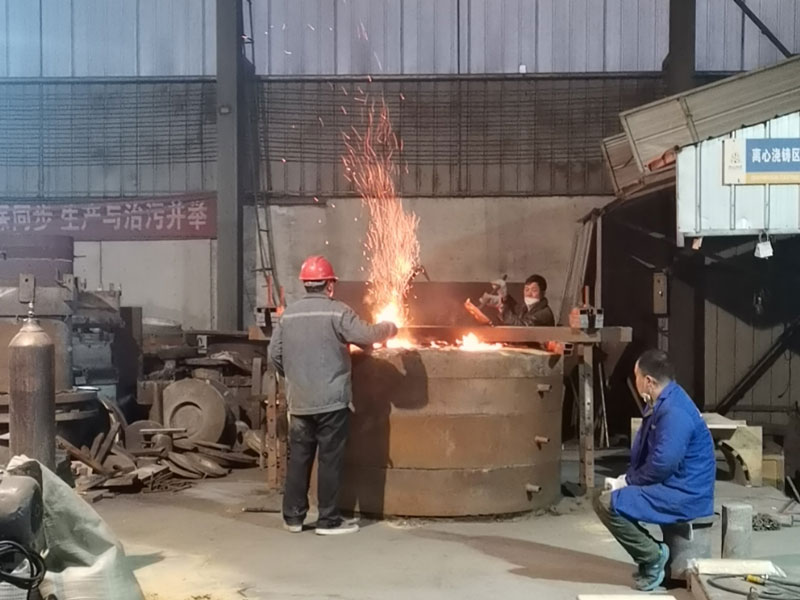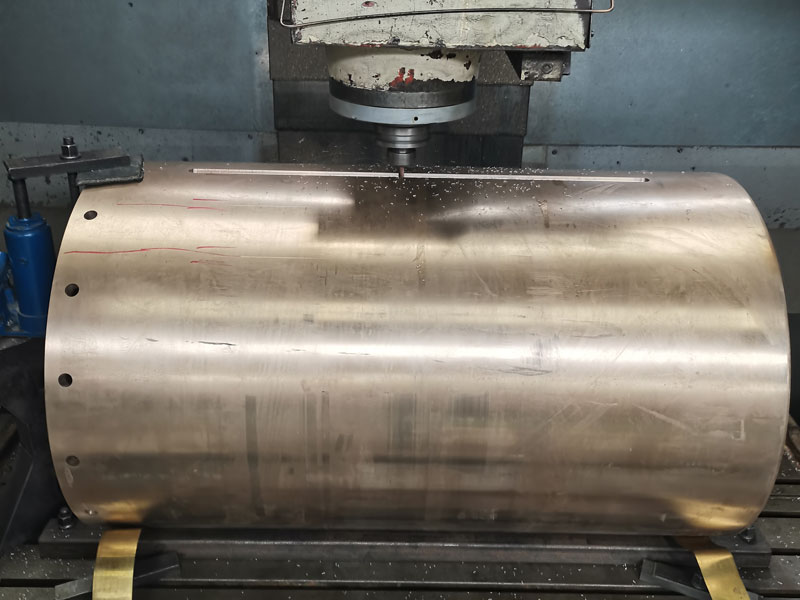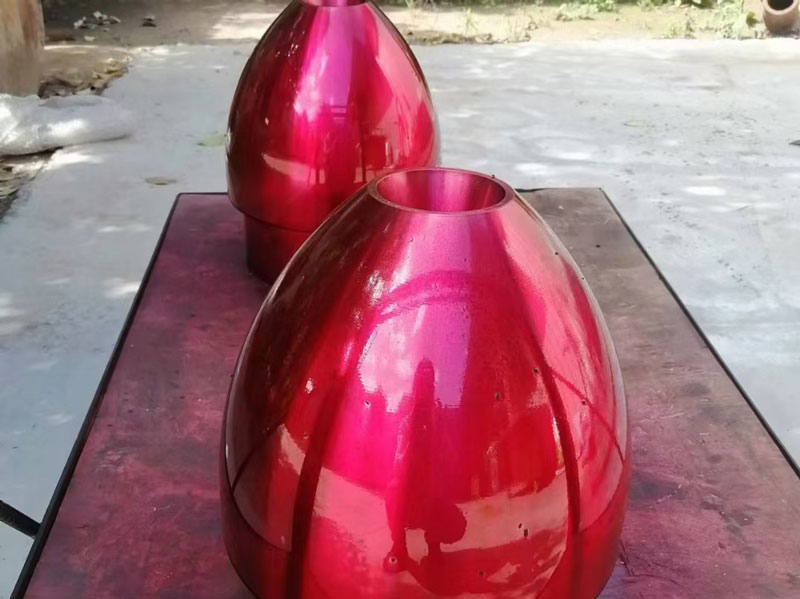The casting process and processing methods of wear-resistant
bronze bushing are mainly as follows:

Casting process:
1. Sand casting method: This is the most commonly used method in the casting process and one of the common methods for bronze sleeve casting. The basic principle is to inject molten bronze into the sand mold. After the molten bronze cools and solidifies, the sand mold is taken out to get the bronze sleeve. The advantage is low cost and can be used for mass casting; the disadvantage is low precision and poor surface quality.
2. Metal mold casting method: This is a high-precision casting method suitable for making bronze bushing with high precision requirements. The basic principle is to inject molten bronze into the metal mold, and after a certain amount of cooling and treatment, a bronze sleeve with high precision can be obtained. The advantages are high precision and good surface quality, which can be used to make bronze bushing with complex shapes; the disadvantages are high cost and complex process.
3. Investment casting method (also known as precision casting method): This is another method that can make high-precision bronze bushing. The basic principle is to inject molten bronze into the investment mold, and after a certain amount of cooling, the investment mold is taken out to get the bronze sleeve. The advantages are also high precision, good surface quality, and suitable for making bronze bushing with complex shapes; the disadvantages are high cost and complex process.
4. Centrifugal casting: This is a method of casting bronze bushing using centrifugal force. By injecting molten bronze into a high-speed rotating mold, the molten bronze performs centrifugal motion to fill the mold and form a bronze sleeve. The bronze sleeve cast by this method has a compact internal structure, high strength and good wear resistance.
The choice of processing method for wear-resistant bronze bushing depends on the specific application scenario, dimensional accuracy and surface quality requirements, etc.

The following are some recommended processing methods to ensure high-quality processing of wear-resistant bronze bushing:
1. Turning: Turning is the most common method for bronze sleeve processing. Through turning, the outer circle, inner hole and end face of the bronze sleeve can be accurately cut to obtain the required dimensional accuracy and shape. Turning can be divided into three stages: rough turning, fine turning and grinding to gradually improve the processing accuracy and surface quality.
2. Milling: For some bronze bushing that require special shapes or details, such as fancy bronze bushing or thin-walled bronze bushing, milling is a good choice. Milling can efficiently remove materials while maintaining high processing accuracy and surface quality.
3. Stamping: Stamping is suitable for large-scale, high-precision bronze sleeve production. By forming the bronze material through the mold, a large number of bronze bushing that meet the requirements can be quickly manufactured, and material waste can be reduced and production efficiency can be improved. However, it should be noted that stamping has a high cost for the production and use of molds.
During the processing, the following points should also be noted:

1. Select appropriate cutting tools and cutting parameters to ensure processing quality and efficiency.
2. Control the temperature and cooling method during processing to avoid material deformation or cracking.
3. Carry out necessary quality inspections, such as size inspection, hardness inspection, non-destructive inspection, etc., to ensure that the bronze sleeve meets relevant standards and customer requirements.
In short, the processing of wear-resistant bronze bushing requires comprehensive consideration of multiple factors, including processing methods, processing accuracy, surface quality requirements, production batches, etc. Selecting appropriate processing methods and controlling key parameters in the processing process can ensure high-quality processing of wear-resistant bronze bushing.


